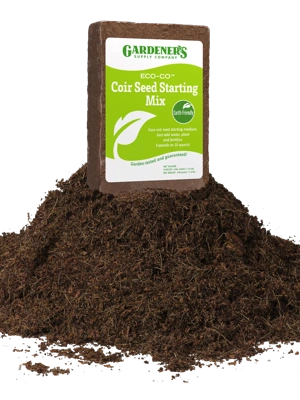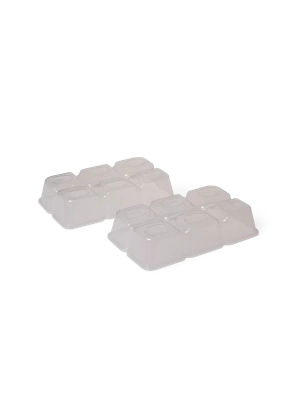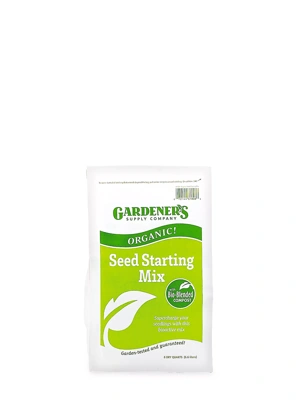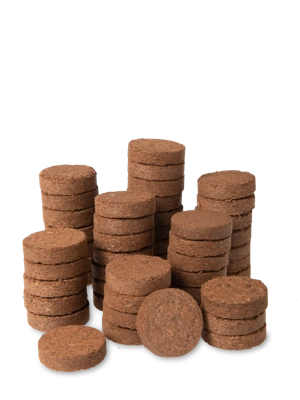How to Fertilize Seedlings
 Comparison of the growth of two seedlings -- the one on the right received Plant Health Care fertilizer.
Comparison of the growth of two seedlings -- the one on the right received Plant Health Care fertilizer.When to Fertilize Seedlings
Most seedstarting mix, whether it contains peat or not, is a soilless mixture that prioritizes good drainage over nutrients. For seed germination, a sterile, well-drained environment is important! When a seed sprouts, the first set of leaves that unfold are called cotyledons. All the nutrients that are needed to sustain these cotyledons are contained right inside the seed. But once the second set of "true" leaves appear, you should begin feeding your seedlings with a dilute fertilizer solution. Mix the fertilizer at half the recommended rate and apply it twice a week. You can continue this feeding program until the seedlings go into the garden, or switch to less frequent full strength feedings, every 7-10 days.
What Type of Fertilizer to Use on Seedlings
Look for an all-purpose fertilizer that contains an even balance of nitrogen (N) to phophorous (P) to potassium (K). An all-purpose fertilizer will help young plants develop a sturdy root system and lush, healthy leaves. At this stage, a water-soluble fertilizer is best — a granular fertilizer can be used later on once plants have matured and you are looking for long-term nutrient release in the garden.
Tips for Fertilizing Seedlings
- Do not apply fertilizer to seedlings that appear stressed — more than anything, seedlings need adequate water and light.
- When it comes to fertilizer, less is more. Too much fertilizer will burn leaves and damage seedlings. If you are unsure of the amount of fertilizer, err on a more dilute solution.
- A fish or seaweed -based fertilizer provides a host of micronutrients to help boost seeding growth! You may want to seek out an odorless brand if you plan to keep your seedlings indoors for awhile.
Last updated: 09/14/2023
Print this Article:
Related items
Get the Dirt
Stay up to date on new articles and advice. Please fill out the information below.












